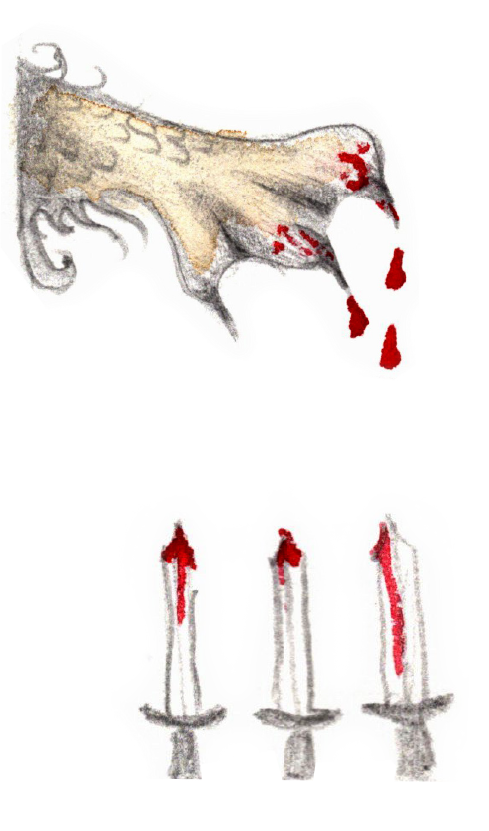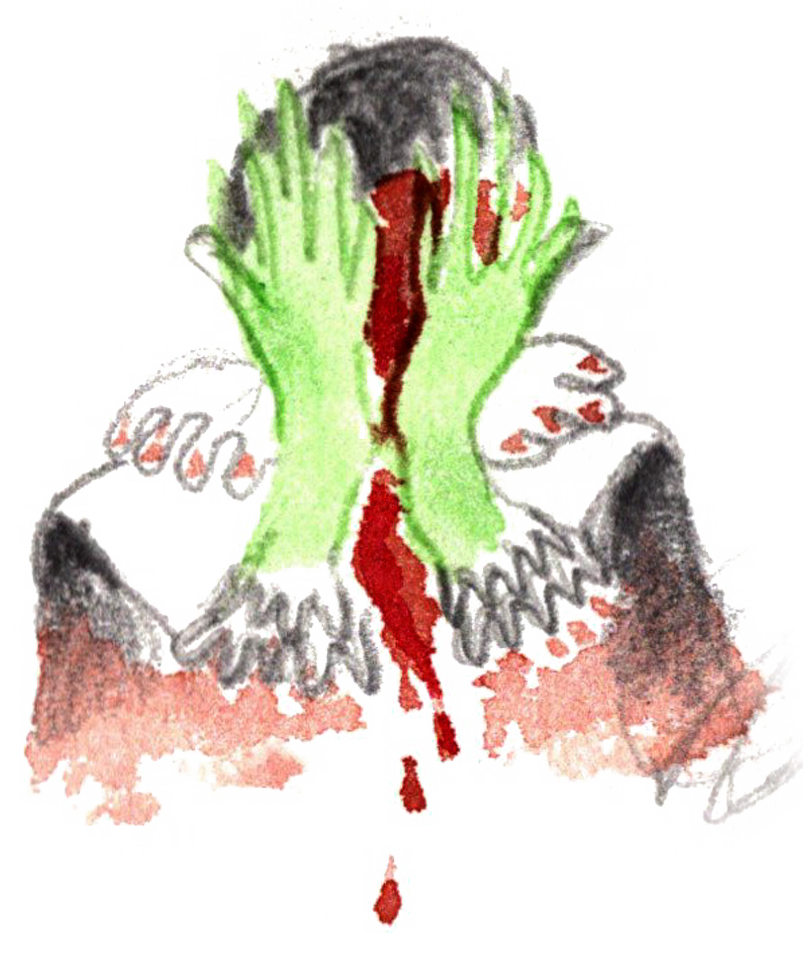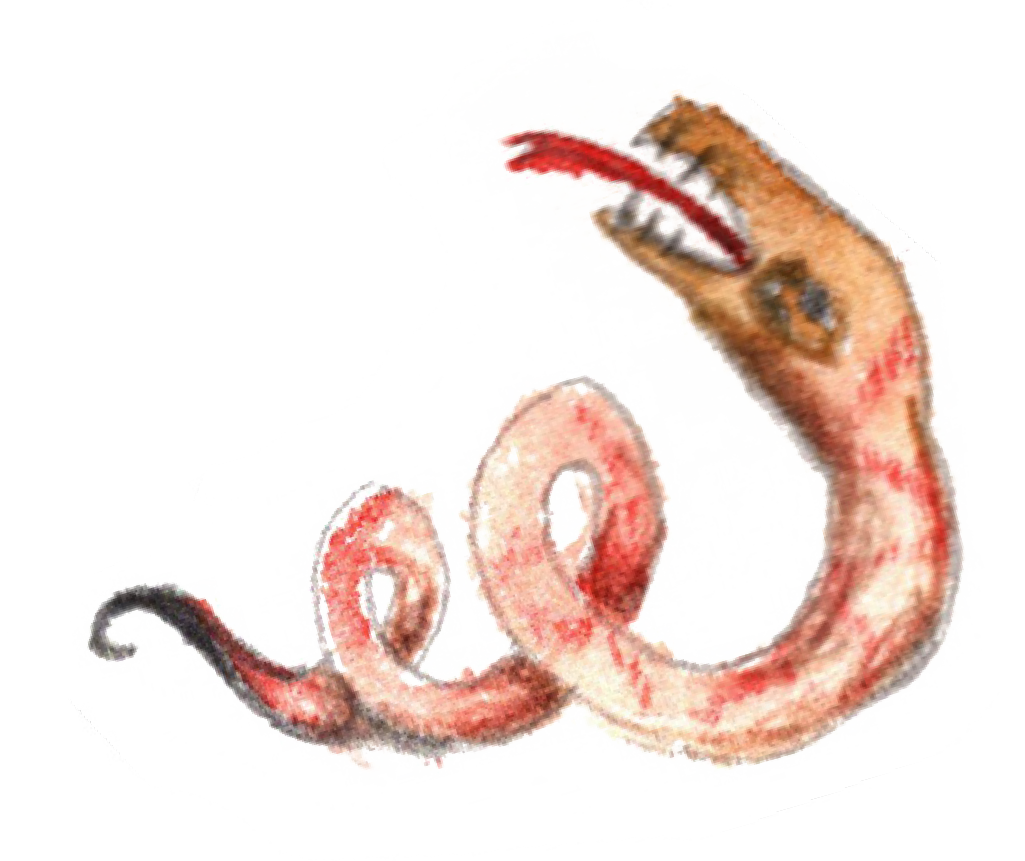
Angela Maasalu and Jaak Juske take us on a fantastical tour of the monsters of Tallinn, weaving together folk tales and stories about political and historical events.
The city of dragons

In 2022, the Tallinn Town Hall celebrated the 700th anniversary since it was first mentioned. The facade of the building is decorated with the heads of two green dragons – two spectacular metal gargoyles. But there is another one – Kolmas Draakon, or the Third Dragon, is the name given to the Town Hall tavern. Dragons can be found elsewhere in the Old Town too, mainly as weathervanes decorating Medieval buildings. Additionally, we can see dragons with magnificent wings on the facade of the Art Nouveau style building at 18 Pikk Street, completed in 1910, now home to Draakoni art gallery.
But beware, in the Old Town more monstrosities can be found – just across the street from Draakoni Gallery sits the Embassy of the Russian Federation. In response to the brutal war Russia has launched against Ukraine, the Estonian parliament declared the current Russian regime terrorist and locals have covered the security fence in front of the building with images of the horrors committed in Ukraine.
The house of the devil's wedding

The Tallinn Old Town is abundant with ghost stories with new ones constantly appearing. One such story is tied to an old merchant house at 16 Rataskaevu Street.
According to the legend, a long time ago, the owner of that house had foolishly burnt through his riches and was becoming desperate. One night his despair had reached such depths that he decided to end his life. And precisely at that moment, a stranger stepped into the room and asked the moneyless master of the house to hold a lavish party on the upper floor of the house the following night. In return, the stranger promised him unimaginable riches but only on the condition that there were no witnesses to the celebration, whoever does so, will face death. The owner of the house agreed.
The following evening, just as agreed, carriages arrived in front of the house, the upper floor windows were lit and the stairs could be heard creaking, exactly as it would under the feet of hordes of people. Beautiful music could be heard from the hall and the whole house rumbled as if a large crowd of people was dancing there. As soon as the clock struck one, the ghostly party vanished. It was said that the owner of the house must have been compensated generously, as already the next morning he continued living even more lavishly than before.
Around the same time, his valet de chambre unexpectedly died. Before drawing his last breath, he had told the priest that he had secretly witnessed the devil's wedding. And so we know that, at least once, the devil has held a party in Tallinn.
On the facade of the same house, behind the leftmost window of the second floor we can see a wall. From the outside, it looks as if curtains have been drawn but, in fact, these are painted on the wall behind the window. According to the legend, the master of the house had permanently closed the door to the room and in order to hide the unused room, he had a curtain painted on the walled-up window.
Phantoms and stones from the heavens
There are also numerous places related to monsters outside the Old Town. Tallinn is divided into eight municipalities and 84 districts. Among these districts are Tondi and Tondiraba, roughly translating into English as "phantom" and "phantom bog" districts. However, the Tondi district located in Kristiine municipality got its name not because of notable sightings of phantoms but after a former landowner and nobleman named Dunte. The Tondiraba district in the Lasnamäe municipality might actually have been such a ghostly place that the bog did, in fact, become known for supposed supernatural phenomena among the local people. By the way, in 1983 traces of meteorite impact were discovered in the limestone found in the area. Most likely, a heavenly monster struck the Tondiraba area around 20,000–25,000 BC.

The monster of Nõmme

There is another statue of a monster in the park of Glehn Castle in the municipality of Nõmme – a concrete sculpture depicting a dragon. The sculpture was created in 1908 on the initiative of local nobleman Nikolai von Glehn. Glehn wanted to create a scene from Estonian mythology, where Kalevipoeg, the hero of the national epic, is stalked by a monster. However, owing to visual similarity, local people started calling the monster a crocodile.
The bloody sites of Soviet terror
Sites with a bloody history can be equally monstrous. And there are numerous such examples in Tallinn. In the Kalarand district we find the massive Patarei Sea Fortress complex, built in the first half of the 19th century as a prison that was feared for many many years. In the early years of the Soviet occupation, just after the Second World War, several thousands of people were imprisoned there in horrid conditions. Today, the former cells and execution room can be visited as exhibits.

In the Old Town, on the corner of Pikk Street and Pagari Street, the KGB museum is open in the basement of the building – this is yet another site where people were tortured during the Soviet period. Now more than ever, difficult history must not be forgotten.
In the primeval valley of the Pirita river in Tallinn, the buildings of the abandoned Kose manor are being devoured by time. In 1942, when the occupying German army decided to use the servants' house of Kose manor for their operations, a problem occurred – their horses became restless inside the building. To investigate, the newly poured concrete floor was removed and a horrific discovery was made: a year before the German occupation began in Estonia, the NKVD had executed 25 people and covered their bodies in concrete to hide the crime. Elsewhere around the manor, mass graves with the remains of at least 53 people were also found. Although the NKVD’s preferred style of execution was a shot in the back of the head, these people had been buried alive. The exact number of bodies found in the grounds of Kose manor and the identities of the people still remain unclear.
